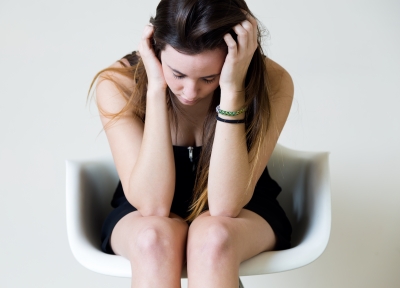Therapy for Chronic Illness in Teens

Therapy for Chronic Illness is useful in treating one layer of chronic sickness or chronic pain. At the bottom is the baseline problem in the body causing the chronic illness. This is something like POTS or cancer. The second layer is the physiological symptoms. Here you find dizziness, joint pain, exhaustion, etc. The top layer, where therapy is helpful, is the psychological contribution to the body’s suffering. This is the stress your teen experiences because of and about the disorder. Your teenager probably has a level of isolation and modification to regular life that is depressing. Also, your teen may experience fear of causing a flare-up with increased activity. These psychological aspects of chronic illness and chronic pain/injury decrease emotional and relational quality of life, which we all know leads to slower physiological healing.
Counseling helps a lot with the top layer. So why should you consider therapy if your teen has chronic illness or pain? To reduce isolation, strategize about how to work through fear of relapse when the fear limits activity your teen is capable of, focus on purpose that can be achieved even with physical limitations, and work towards finding joy even when your teen isn’t happy. In other words, some form of counseling or support for chronically ill teens is essential.
An Example Case: Therapy for a Teen with POTS
When you have something like POTS (Postural Orthostatic Tachycardia Syndrome), you can spend a lot of time feeling dizzy. Some people find they faint. This especially happens when they get too hot or go from lying down to standing. It also occurs at random. Knowing you could faint without warning and that you are apt to feel very dizzy at any time causes fear of feeling that way.
Several years ago I saw my first POTS client. I don’t even know how she came to see me for therapy because I had no experience with chronic illness at the time. In fact, I didn’t even have my own diagnosis of lupus yet (although by then I wasn’t feeling well on a regular basis). This sweet, gentle, kind teenager was living with constant anxiety. It turned out she was really, really afraid of getting dizzy. When she had been at her most ill, the room spun so much that she dared not even open her eyes. She spent days and then months in bed.
So, how did therapy help her? She was sent to me because I had experience using cognitive-behavioral therapy with teenagers. When it became evident that she had already done a lot of the medical work necessary to live tolerably with POTS, then I realized she had the aforementioned layering to her symptoms.
Layering for the Teen with POTS
At the root of this particular teen’s issues was POTS. The second layer was her miserable symptoms. She felt a lot of brain fog, dizziness, nausea, and fainting without much warning. The top layer for her was a fear of fainting unexpectedly. It generalized to fear of dizziness because to her that was a sign fainting was likely. She developed a lot of anxiety. To control the possibility of fainting, she lay in bed for hours every day. She became physically weak and socially isolated. This increased her anxiety. But, what does anxiety cause if it rises to the level of panic? It causes brain fog and dizziness. So now, how was she to tell which was which?
After she attended the fabulous Mayo Clinic PRC in Rochester, MN, she came home knowing how to manage a lot of her physical symptoms (the middle layer). She still had dizziness and brain fog related to anxiety. Therapy made a significant impact on the top layer of her suffering as she was taught to use cognitive behavioral therapy methods to confront her fear of dizziness and associated anxieties. In her case, the Mayo Clinic doctors told her there wasn’t a direct cure for the bottom layer of her illness (POTS), but that it could be tolerably managed. Because of hard work, her life improved enough for her to return to school and start socializing again.
Counseling for Chronic Illness
How does therapy help with this? Counseling isn’t medical healthcare. So, it doesn’t help at all with the root cause of your child’s disease. Counseling also has little impact on the middle layer of the cake, which is the physical discomfort that you and your teen seek to manage with medical intervention. Counseling for chronically ill teens is quite helpful with the top layer of the cake. It can help your teen learn to discern when pain is caused by a physiological process in the body versus when it’s caused by stress and anxiety about the illness. By reducing stress, anxiety, loneliness, and depression, therapy for chronic illness helps bring the intensity of suffering down a notch or two.
Support for the Family
The counseling process also helps families living with the person suffering from chronic pain and illness. You have to walk on a tightrope of doing for your teen where they can’t without being an enabler. You must not do for them where they can do for themselves. Firstly, you will create a learned helplessness in your child. Secondly, if your teenager does all he can, then they can retain as much physical and emotional strength as possible. It’s just that it’s incredibly difficult for a parent to know which side of the line they are on. You don’t want to convey a lack of sympathy, but you also don’t want to prevent your teenager from living as fully as possible. Therapy can help you ferret out the mixture of flexibility and discipline your chronically ill adolescent needs from you.
Helping teens grow and families improve connection,
Lauren Goodman, MS, MFT



